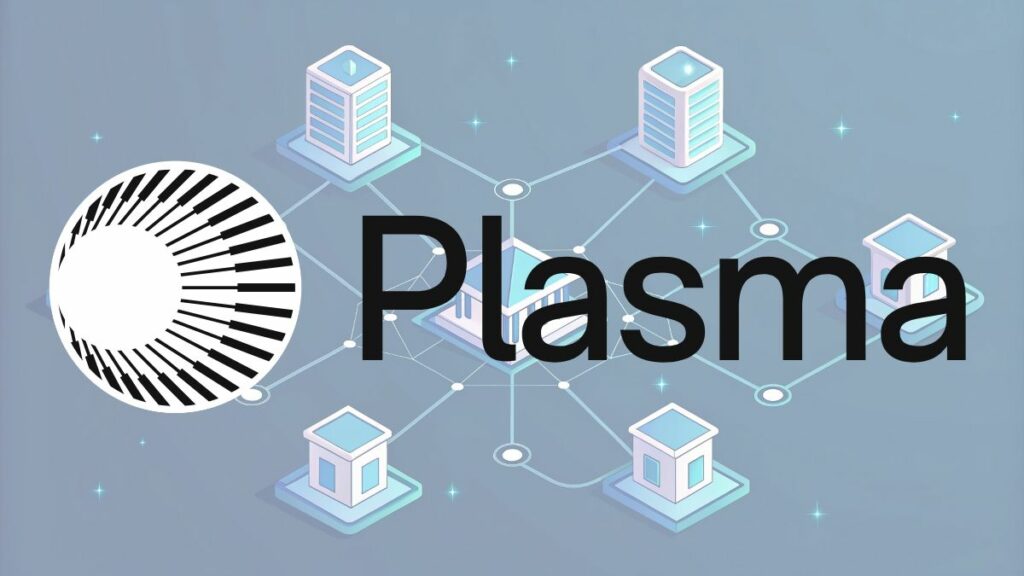Plasma Blockchain is a purpose-built network designed exclusively to optimize stablecoin infrastructure. It provides a dedicated environment for the efficient issuance, transfer, and management of value-stable digital assets. By prioritizing the unique demands of high-volume stablecoin transactions above all else, Plasma aims to be the foundational layer for this critical asset class.
What is Plasma Blockchain?

Plasma Blockchain is a specialized blockchain network designed primarily as an infrastructure layer for stablecoins, particularly USD Tether (USDT). Its core mission is to provide a dedicated, optimized environment for the efficient issuance, transfer, and management of stable digital assets.
Unlike general-purpose blockchains, Plasma positions itself as a “stablecoin-first” solution, tailoring its entire architecture to meet the unique demands of high-volume, value-stable transactions that define this asset class.
Engineered for High Scalability
A defining feature of the blockchain is its strong emphasis on scalability. It is engineered specifically to handle massive transaction volumes, targeting speeds significantly higher than many existing networks.
This focus ensures the blockchain can support the intense throughput required for stablecoins to function effectively as everyday payment methods and settlement layers, especially during periods of peak demand, without congestion or excessive fees hindering usability.
A Bitcoin-Aligned Sidechain
The blockchain operates as a sidechain connected to the Bitcoin network. This design leverages Bitcoin’s unparalleled security and decentralization as its foundational settlement layer. Transactions processed rapidly and efficiently on the Plasma chain can ultimately settle and derive finality on the Bitcoin blockchain, combining Plasma’s high performance for stablecoin operations with Bitcoin’s robust security guarantees.
Positioning in the Stablecoin Ecosystem
Plasma aims to become a dominant infrastructure player within the rapidly expanding stablecoin market. By providing a scalable, secure, and specially designed environment, it aims to draw considerable stablecoin activity, especially USDT, establishing itself as the preferred blockchain for businesses and users who value efficiency and reliability in stablecoin transactions within the larger crypto ecosystem.
How Does Plasma Blockchain Work?

Plasma operates using Bitcoin’s Unspent Transaction Output (UTXO) model. Every transaction consumes existing UTXOs and creates new ones, establishing a clear, verifiable chain of ownership for digital assets. This deterministic structure allows for efficient transaction validation and state management, providing a predictable framework optimized for high-volume asset transfers.
Two-Way Peg to Bitcoin Security
Assets move between the Bitcoin mainchain and the blockchain sidechain via a secure two-way peg. Users lock Bitcoin in a specific mainchain address, generating a corresponding representation on Plasma. To exit Plasma and return assets to Bitcoin, users submit cryptographic proof verified against the mainchain’s state, leveraging Bitcoin’s security for finality.
Zero-Knowledge Rollups for Scalability
Plasma aggregates large batches of transactions off-chain using Zero-Knowledge Rollups (specifically zk-STARK proofs). These computations generate a succinct cryptographic proof (a STARK) that verifies the validity of the entire batch. Only this compact proof and minimal essential data are submitted periodically to the Bitcoin blockchain, drastically reducing the settlement load while inheriting Bitcoin’s security.
Proof Compression and Batch Settlement
The core scaling mechanism involves compressing transaction validity proofs off-chain. Validators bundle numerous transactions, process them efficiently within the blockchain environment, and generate a single, verifiable zk-STARK proof for the batch. This compressed proof is then settled on the Bitcoin blockchain, enabling thousands of transactions to be finalized on Bitcoin with the footprint of a single, highly secure settlement event.
The Role of the XPL Token in the Plasma Ecosystem

The XPL token serves as the governance key for the network. Holders possess voting rights, enabling them to participate directly in shaping the protocol’s future. This includes voting on critical upgrades, parameter adjustments, and the integration of new stablecoins or features, ensuring the ecosystem evolves according to community consensus.
Transaction Fee Payment Mechanism
XPL acts as the primary currency for paying transaction fees within the blockchain ecosystem. Users utilize XPL to cover the costs associated with transferring stablecoins and other digital assets on the network. This creates inherent utility and demand for the token, directly linking its value to the level of activity on the blockchain.
Validator Staking and Network Security
Operating a validator node on Plasma requires staking XPL tokens. This staking mechanism serves two vital purposes: it incentivizes validators to perform their duties honestly and contributes to the overall security and decentralization of the network. Stakers typically earn rewards paid in XPL for their participation.
Ecosystem Incentives and Rewards
The blockchain ecosystem utilizes XPL to incentivize desired user behaviors and foster growth. This includes rewarding users for providing liquidity to key stablecoin pairs, participating in specific network activities, or engaging with early adoption programs. These incentive schemes aim to stimulate usage, attract participants, and build a robust, stablecoin-focused economy.
Plasma’s Architecture: EVM and PlasmaBFT

The network incorporates full EVM compatibility. This critical feature allows developers to seamlessly deploy existing Ethereum smart contracts onto the Plasma blockchain. It enables the execution of complex dApps and sophisticated smart contract logic, particularly those designed for stablecoin operations, leveraging familiar Ethereum development tools and standards.
EVM Execution within UTXO Framework
The architecture uniquely executes EVM bytecode within its native Bitcoin-inspired UTXO model. This integration means smart contract operations on Plasma inherit the deterministic execution and clear state transition properties of the UTXO system, while still providing the programmability developers expect from an EVM environment for stablecoin-related applications.
PlasmaBFT Consensus Mechanism
Network consensus is achieved through PlasmaBFT, a custom variant of the Practical Byzantine Fault Tolerance (pBFT) algorithm specifically optimized for Plasma’s requirements. PlasmaBFT enables rapid transaction finality, meaning transactions are confirmed irreversibly within seconds, which is essential for high-velocity stablecoin payments and reliable dApp interactions on the network.
Scalable & Decentralized Validation
PlasmaBFT operates with a permissionless set of validators who propose and order transactions, and then vote on blocks. This design balances decentralization with high throughput. Validators efficiently reach consensus on the state of the EVM and UTXO set, enabling the network to process thousands of transactions per second while maintaining security and immediate finality for users and applications.
Conclusion
Plasma Blockchain emerges as a specialized powerhouse for stablecoins, uniquely merging Bitcoin’s foundational security with high-throughput execution. By prioritizing stablecoin efficiency and scalability through its innovative architecture, Plasma addresses critical limitations in existing networks. It is positioned to become essential infrastructure, enabling secure, fast, and cost-effective stablecoin transactions at scale for the broader ecosystem.










